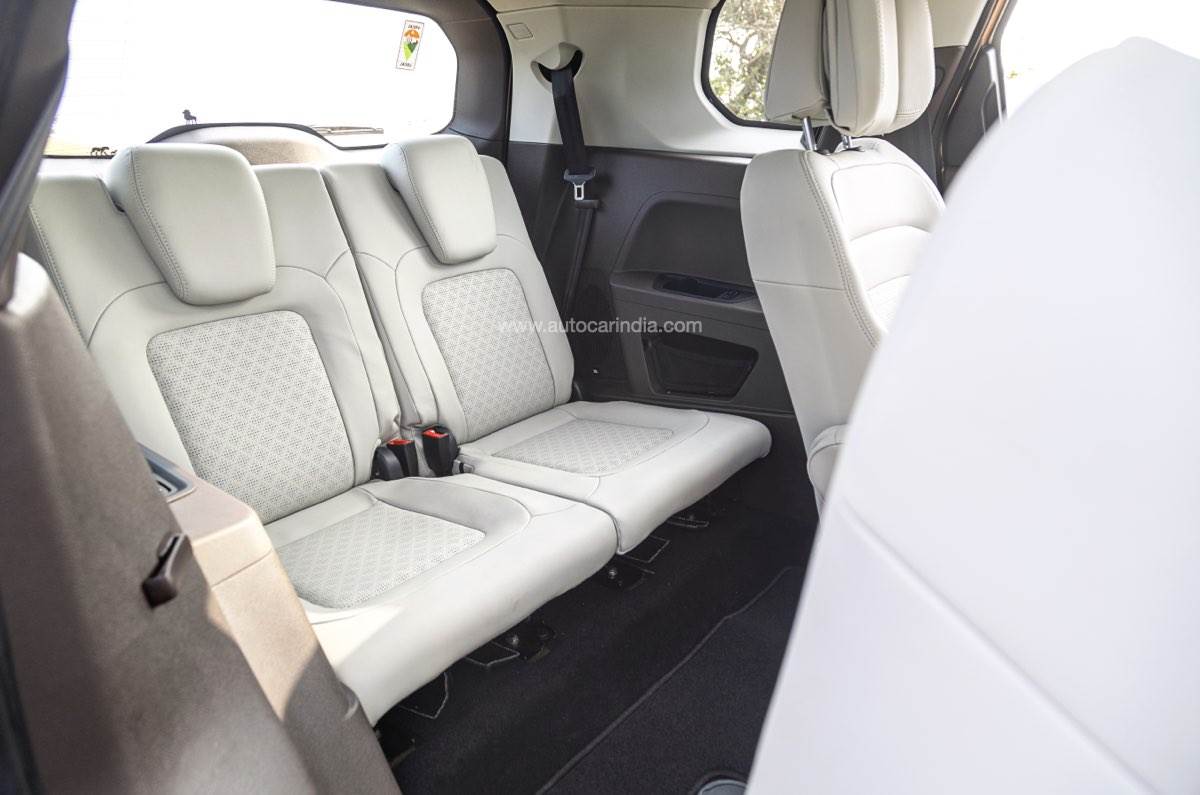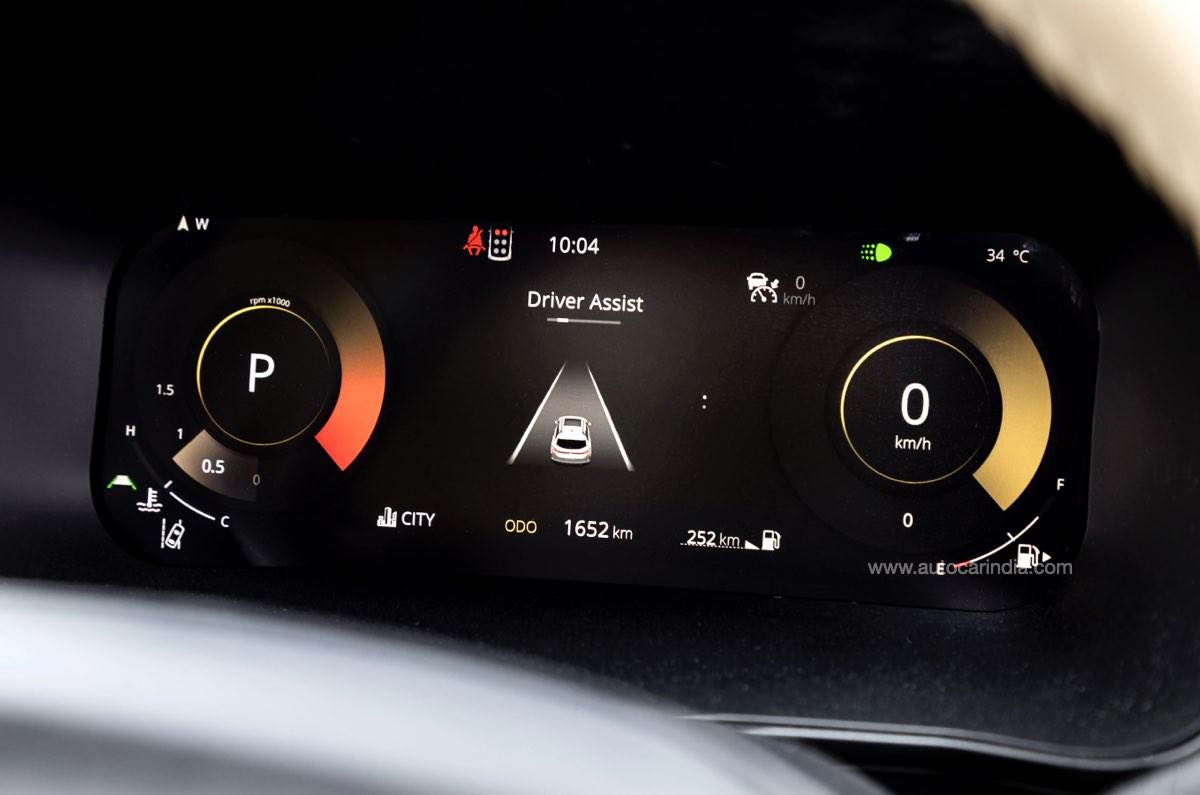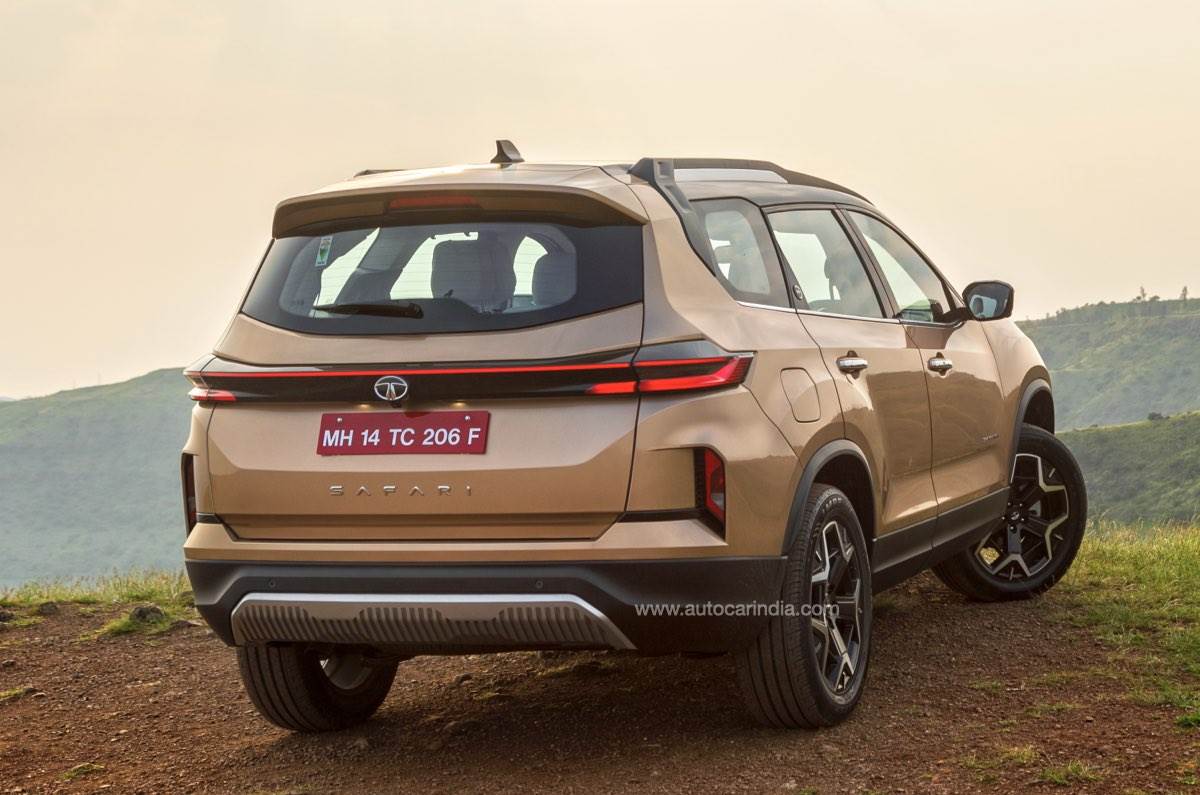The Safari gets a new look, more features and equipment, and a crucial mechanical change.
Tata is on a wild update streak with its models. First the Nexon got an update, then the Harrier and now, the flagship Safari gets a revamp. This isn’t a minor nip and tuck job, because Tata has gone to town with the changes, and crucially, has focused on giving the Safari its own identity, rather than it being deemed as just a Harrier with a third row. It gets a completely new look, refreshed interior with modern tech and mechanical changes. Let’s see how well it has worked out.
Tata Safari facelift exterior styling
The Safari carries over Tata’s new design language without any change to the sheet metal. The ‘soft’ parts like the bumpers, grille and lights are all new and this has completely changed the look of the car. The LED Daytime Running Lamp runs across the width of the nose, with the Safari also getting sequential turn indicators. The ‘parametric’ grille is a single piece unit compared to the Harrier’s split setup and is a point of differentiation between the two models, and, for the Safari, they are body coloured. Further down, the LED headlamps and LED fog lamps are housed in a black casing, which also gets Safari lettering in chrome. Since there is no split grille, the air intake is blacked out with a faux metal scuff plate for that butch look.
Over to the side, the Safari gets 19-inch wheels on the top-spec variant and 17- and 18-inch options on the lower trims. The wheels do a very good job of adding road presence, and also get aero inserts that help reduce drag. You might also remember the wheel design that was previewed on the Tata Sierra concept shown at the Auto Expo. The alloys are wrapped with 245/55 R19 tyres, and being relatively lower profile, they have an impact on ride quality. More on that in a bit. Other Safari traits continue like a rising shoulder line and the roof with the famous kink.
At the rear, things are simpler, with revisions to the tail-lamps, which make it sharper, and an LED strip joining the two. The bumper too is all new with sharp lines, and there is a faux metal bash plate for that rugged look. That said, one of the most important updates is seen when you wag your leg under the bumper: the boot now gets gesture control for opening, and is finally electric.
Tata Safari facelift interior and features
Like the Harrier, the Safari comes specced with the ‘persona’ that you choose. The top-spec ‘Accomplished’ gets a dual-tone interior with white and brown upholstery. It has an air of premiumness, but the light-coloured seats and panels on the steering and doors will be difficult to maintain. The passenger side also gets an artificial wood panel with pinstriping which looks upmarket but may not be to everyone’s tastes.

Dual-tone interior feels premium on top-spec trim, but the white colour will be difficult to maintain.
The Safari gets the same four-spoke steering as the Harrier along with a gloss black panel and the backlit Tata logo that you just can’t keep free of smudges and marks. There is also a fully digital instrument cluster that has customisable layouts, and the option of a map view once you’ve connected your phone via Apple CarPlay or Android Auto. That said, for a full map view, Android users will have to use Google Maps and Apple users will have to use Apple Maps. The cluster also displays drive mode changes, terrain mode changes and ADAS settings as well. The brightness, sharpness and overall viewing angles are good.
Next is the 12.3-inch touchscreen that gets wireless connectivity for Apple and Android and is slick to respond. It also packs in a lot of the settings for HVAC, ADAS, air purifier, audio modes and mood lighting. The audio system is also updated from a 9-speaker system to 10 speakers, along with a sub-woofer and 13 presets in the screen to choose from. The presets are very well calibrated and do enhance the music experience. You can also have individual modes for individual seats making the whole experience even more personal. The other highlight on the Safari is the 360-degree camera, which is high resolution and is a big-plus while maneuvering this SUV.

The touch-based HVAC controls aren’t the most intuitive to use, especially on the move.
Under the screen are the HVAC controls on a gloss black panel, with the only physical buttons being the temperature toggles for the dual-zone climate control. Everything else, including the fan speed, is on a touch-based panel. Adjusting the fan speed or even functions like the electric tailgate opening is rather difficult as the feedback and response from the panel aren’t good. On the move, this would be an even more frustrating experience, and it’s better to use voice commands, which, despite not being the quickest, at least doesn’t let you fumble.
Further down is a wireless charging pad that is difficult to access. You need to angle your phone in an awkward manner trying to dodge the knurled terrain response selector and cram your phone in, which, inevitably, will hit the panels around. Taking it out is the same story as you more often than not end up hitting the HVAC buttons or scraping your phone. For charging, there is a USB-A and a 45W type-C port as well.

The rotary drive selector is unusually large and restricts access to the wireless charger.
Next is the terrain response selector that is unnecessarily large, and besides it are the non-backlit drive mode buttons. When you do change the drive modes, however, the ambient lighting too changes color momentarily. Green for Eco, blue for City and red for Sport. What’s also new on the Safari is the drive selector for the automatic version, which is a shift-by-wire mechanism, and an electric parking brake, which replaces the aircraft-style brake lever on the top-spec version. The centre storage also gets vents to be used as a cool box, and a USB-A and a type-C port as well.
Tata Safari facelift seating
The seats on the new Safari are powered for both driver and passenger with memory functions for the driver and ventilation for both. They are fairly broad and supportive, but cushioning is on the firmer side. However, on the whole, the new Safari is leaps ahead of the previous gen, both in terms of features and design.

The theatre-like seating position allows for a good view out from each row.
There has been no change to the Safari’s wheelbase, so space in the middle row remains unchanged, The captain seat version also gets ventilation and there are USB-A and type-C ports here as well. There are AC vents in the B-pillar too, but surprisingly, no blower control for the middle row. The theatre-like seating position allows you to get a good view out, and the addition of sunblinds is a plus to have on hot days. What further elevates the sense of space is the panoramic sunroof, which gets ambient lighting and adds flair to the cabin at night.
Entering the third row past the captain seats isn’t easy since they don’t tumble down. They only recline and don’t slide forward enough for easy access. It’s easier to use the space between the two seats as a passage to access the third row. However, once you’re seated at the back, the amount of room is impressive even for tall adults. Sure, headroom is tight for occupants over six feet, but the adjustable backrest angle and sliding middle row makes the third row properly usable, and the most spacious in its class. There are three-point seat belts for two, individual headrests, AC blower controls and USB-A and a type-C ports. The downside is the boot space, which, with all three rows up, is only good for a couple of soft bags.

The third-row is properly usable even for adults and comes with its own amenities.
In terms of safety, the Safari gets the usual goody bag of sensors and assists, along with ADAS. The Safari gets 6 airbags as standard, and the top-spec version gets an additional knee airbag, taking the count to seven.
Tata Safari engine, gearbox and performance
The updated Safari gets the same 2.0-litre diesel engine making 170hp and 350Nm as before, but in BS6.2 guise. Tata claims to have upped the damping and refinement, but, to be honest, it is still one of the sore points of the Safari: there is that typical diesel clatter at idle that seeps into the cabin. As you get going and the engine speed rises, the gruff noise increases. That said, the engine feels strong to perform and has a wide torque band. Mid-range is where you will get that punch, and response overall is solid. The Safari is also very happy and comfortable at highway speeds. Changing the drive modes also changes the response, just as before. In Eco and City, the engine is laidback, but switch to Sport, and there is a noticeable gain in response. This is largely to do with the pedal mapping, which, as you change modes, alters the response to the accelerator, giving you a noticeable change in driving manners.

Not the most refined, but the engine is powerful and has a wide torque band.
Mated to the engine is the same six-speed torque converter automatic gearbox. Quick shifts and lightning-fast responses is not something it prefers, and the shifts are carried over in a leisurely manner. Sure, sport mode does help, but inherently, it’s a relaxed gearbox.
To gain more control, there is also the option of paddle shifters, a new addition in the updated Safari. However, they don’t particularly enhance the driving experience as manually shifting via the paddles isn’t very quick or responsive. Operate the paddle shifters and the powertrain automatically defaults to Sport mode, but the experience isn’t exactly sporty. The shifts are slow and downshifts are frustratingly delayed if the engine is at high revs. This doesn’t allow for enthusiastic manual shifting and its best to let the gearbox work on its own. What is another irritant is operating the new shift-by-wire shifter, which requires the right technique. During three-point turns, shifting from D to R and back is a fiddly affair, since there isnt a clear response from the lever. It often gets stuck in N or simply doesn’t change the gear. This will take owners some time to get used to, and a lot of patience.
Tata Safari handling and ride comfort
Speaking of three-point turns, arguably the biggest and the most important update on this Safari is the steering system. Gone is the older hydraulic power steering unit, and in its place is a modern electric power steering (EPS) that has transformed the way the Safari handles. To start off, at low and city speeds, you no longer have to muscle the car around, and get your arm workout done. The steering is light and easy in Eco and City mode, making parking very convenient. In Sports, it does weigh up to add some feel while driving. Three-point turns are done with minimal effort and getting it out of tight spots is very easy too. Tata has also increased the track on the new Safari owing to the bigger wheels, but it isnt something that was noticeable through corners.
On the subject of ride, Tata has retuned the suspension with updated dampers, spring rates and new bushings, giving the Safari a softer setup than before. However, shod with big, 19-inch wheels and lower profile tyres, bump absorption is compromised. Over a broken patch of road, you will notice sharp movements and potholes are met with quite a thud. The toughness of that Land Rover platform does shine through with the taut and tight body control the faster you go. On the highway, the ride is composed and flat, and the sense of control and stability you get is the hallmark of the Safari, which makes it a great high speed cruiser.

As before, the Safari feels robust and rugged, but ride quality is firm because of the larger wheels.
Tata Safari ADAS performance
The other big talking point on the Safari is the ADAS: it gets adaptive cruise control, lane departure warning, collision warning, automatic braking, rear cross-traffic alert and blind spot monitoring. Lane keep assist is also part of the package, but will be introduced later as a software update.

ADAS features work well, but the automatic braking system could have done with more sensitivity.
In our conditions, the ADAS works well, especially the adaptive cruise control which does the job even at slow bumper-to-bumper speeds. The lane departure warning system is good at detecting lanes correctly too. What could have been better, is the automatic emergency braking. We found that despite driving closer than usual to the car in front (done for testing the ADAS) it did not activate the brakes, despite adjusting the setting of the brake activation to the maximum distance. Tata claims this is done specifically with India’s erratic traffic conditions, but we would have liked the emergency braking to kick in from a safe distance. Rear cross-traffic alerts and blind spot monitoring, on the other hand, work flawlessly.
Tata Safari verdict
Prices for the Safari will be out on October 17, and since there have been a significant amount of additions and changes, we expect it to cost between Rs 17 lakh-26 lakh. With this update, many of the Safari’s weaknesses have been addressed, with the electric power steering, electric tail gate, more features and a modern design. However, the engine refinement and some ergonomic issues are still present.

The updated Safari is a lot of car for its money.
But what the Safari will be banking on is its fantastic road presence, hugely practical and spacious cabin, and lastly, the wide array of variants on offer. It sure is a lot more car for the money now, and that’s something SUV buyers today are willing to pay for.
Also See:

























